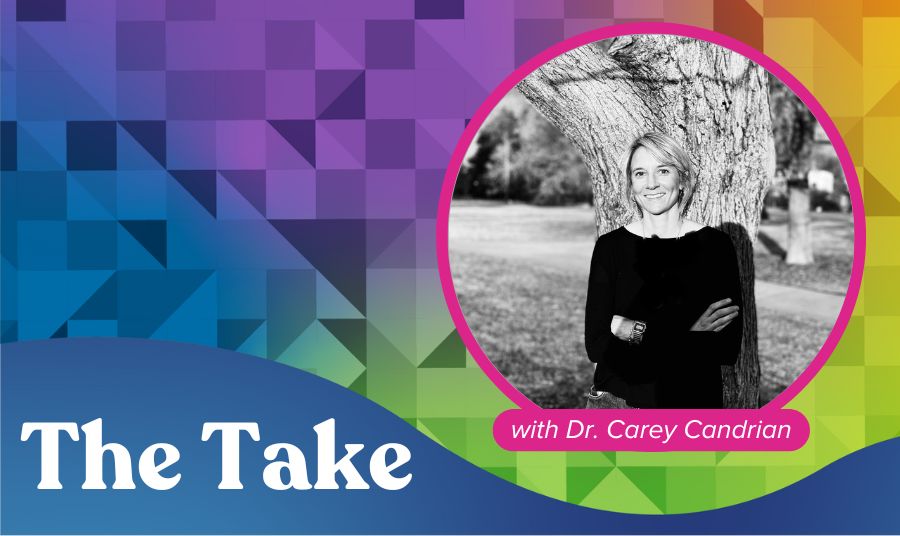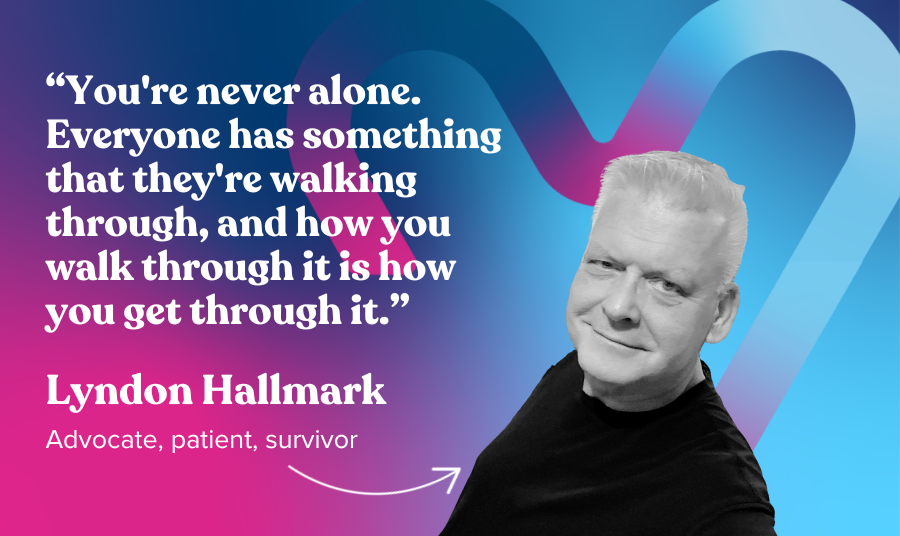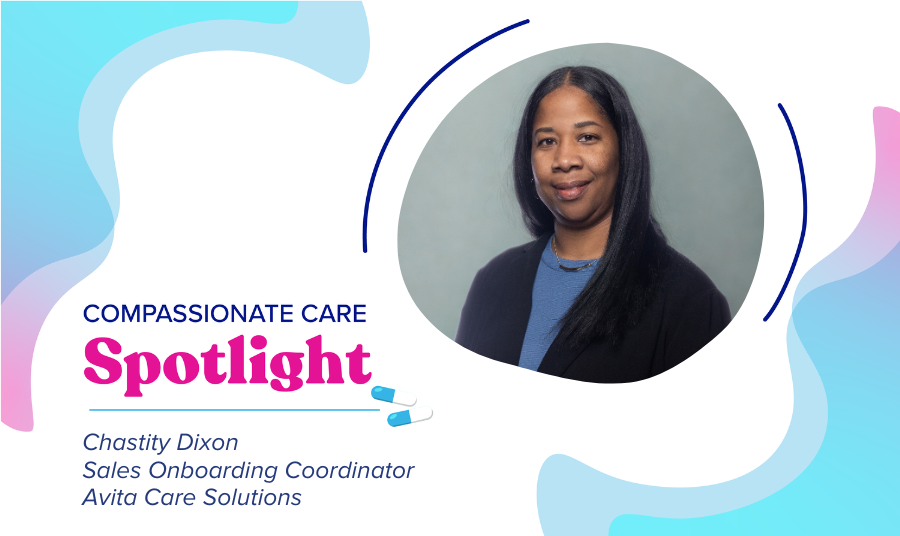Just in time for National LGBTQ+ Health Awareness Week, Avita Chief Advocacy Officer Glen Pietrandoni chats with Dr. Carey Candrian, associate professor in the Division of General Internal Medicine at the University of Colorado School of Medicine and board member at GLMA: Health Professionals Advancing LGBTQ+ Equality. In this edition of “The Take,” the two discuss the significant health disparities older members of the LGBTQ+ community face after a lifetime of stigmatization and discrimination from both the medical field and society at large and why education, advocacy, and research are core to championing health equity for this historically stigmatized community.
The top three factors impacting LGBTQ+ health
GLEN: Thanks for joining us, Carey! To kick things off, can you describe the top factors impacting health equity for older members of the LGBTQ+ community? Do they differ from other demographics?
DR. CANDRIAN: I group the factors into three main buckets: economic, social support, and the effects of a lifetime of stigma and discrimination.
We know that older LGBTQ+ people have been disproportionately affected by economic strain. Studies show that one out of every three LGBTQ+ individuals lives at or below the poverty line. This occurs for several reasons. Job discrimination was very real for this group. During their working years, many LGBTQ+ community members were at risk of being fired if they were open about who they were and who they loved. And because the U.S. did not legalize same-sex marriage until 2015, many of those who did have partners were denied access to spousal benefits and pensions as they aged, which affected their financial security.
The second bucket is around social and family support. LGBTQ+ people are less likely to be married and have kids, so they lack the traditional family structure. They’re also more likely to be estranged from their biological families, so they’re often entering their senior years with reduced overall support.
Magnifying this is the stigma and discrimination many of these individuals have faced throughout their lives. They grew up in a culture where having to be quiet about who they were was ingrained. This “habit of silence” disproportionately affects the health of older LGBTQ+ individuals because they’re less likely to talk about who they need and what kind of care they want. Finally, discrimination is already happening throughout the healthcare ecosystem; it’s a wicked problem.
Older LGBTQ+ community members grew up in a culture where having to be quiet about who they were was ingrained. This “habit of silence” disproportionately affects [their health] because they're less likely to talk about who they need and what kind of care they want.
Dr. Carey Candrian
A disproportionate risk for concrete health outcomes
GLEN: Are members of the older LGBTQ+ community more prone to specific health concerns than their heterosexual counterparts?
DR. CANDRIAN: Great question. A study by the National Institute on Minority Health and Health Disparities shows that the stress of living in a stigmatized culture and environment can take up to twelve years off LGBTQ+ people’s lives. We know this community is disproportionately at risk for various concrete health outcomes. They have higher rates of anxiety, depression, suicide, certain cancers, and cardiovascular disease.
Once again, a lot of these health disparities come back to healthcare stigma and discrimination. There’s mistrust of healthcare providers and a reluctance to seek help due to the fear that they might be denied care or receive worse care. Providers need to know a patient’s entire health history (and who they truly are) to offer the best and most complete care. But for the LGBTQ+ community, it’s still considered dangerous and scary to provide that information, which results in delayed care and higher rates of adverse health outcomes.
GLEN: What about alcohol, drug, and cigarette use? Aren’t the usage rates of those substances higher in the LGBTQ+ community?
DR. CANDRIAN: They are higher. A speaker just visited my class to talk about this. The challenge is to remove the stigma from this statistic and instead contextualize the reason for it. Substance use historically has been a critical coping strategy for many members of the LGBTQ+ community, a way for people to deal with the stresses of a life where the only safe place to meet might be in bars around alcohol.
A study by the National Institute on Minority Health and Health Disparities shows that the stress of living in a stigmatized culture and environment can take up to twelve years off LGBTQ+ people's lives.
Dr. Carey Candrian
The roles of stigma and discrimination in LGBTQ+ health inequity
GLEN: Why and how do stigma and discrimination play a role in healthcare barriers for older members of the LGBTQ+ community—both the stigma the LGBTQ+ community has been facing for years as well as the more recent targeted political attacks? It’s scary out there.
DR. CANDRIAN: It’s unbelievable. The fact is that it’s still very dangerous to be LGBTQ+ in many parts of this country. As a result, a habit of silence remains with this community’s older generation. It’s hard enough for them to speak up about who they are; it’s even harder when they’re facing a serious illness or a health crisis.
That’s why I’m grateful for organizations like Avita, GLMA, and the community health centers that prioritize wider access to LGBTQ+-friendly healthcare. For members of the LGBTQ+ community, just knowing that a provider is trustworthy and accepting is a huge consideration.
The fact is that it’s still very dangerous to be LGBTQ+ in many parts of this country. As a result, a habit of silence remains with this community’s older generation. It’s hard enough for them to speak up about who they are; it’s even harder when they're facing a serious illness or a health crisis.
Dr. Carey Candrian
How long-term HIV treatment enters the mix
GLEN: How does long-term HIV treatment enter the healthcare mix for older members of the LGBTQ+ community?
DR. CANDRIAN: More than 50% of Americans living with HIV are 50 and older. These people weren’t supposed to live this long. Thankfully, due to innovations in HIV treatment, they have made it. But unfortunately, many are now very financially insecure and facing challenges in accessing the treatment they need.
Once again, this comes back to stigma—there’s still so much of it for folks living with HIV and so many assumptions that impact the type of care they can get and their access to continuity of care.
GLEN: I live in Palm Springs for part of the year. In the 90s, a lot of HIV-positive people from San Francisco and L.A. moved here, basically waiting to die, because it was less expensive and offered good healthcare. But guess what? They are thriving right now. As a result, it’s very common here to talk about HIV prevention and treatment and the struggles the LGBTQ+ community is facing. There are excellent resources. But in other areas across the nation, I know the stigma that goes along with living longer with HIV is alive and well and that trying to find resources and culturally competent providers is a different story.
DR. CANDRIAN: Exactly. The barrier for many older members of the LGBTQ+ community living with HIV is the lack of resources and providers who are properly educated in longitudinal HIV care, specifically for geriatric populations.
GLEN: A couple of social organizations are trying to raise awareness around aging and HIV. But something that gets forgotten is that HIV is new, relatively speaking—the epidemic started in 1981. Nobody has lived this long before with HIV. We don’t know what we don’t know. That lack of a bank of healthcare knowledge and training can be scary for older people living with HIV.
More than 50% of Americans living with HIV are 50 and older. These people weren't supposed to live this long. Thankfully, due to innovations in HIV treatment, they have made it. But unfortunately, many are now very financially insecure and facing challenges in accessing the treatment they need.
Dr. Carey Candrian
Why community health centers empower LGBTQ+ health
GLEN: When it comes to enhancing healthcare options for older members of the LGBTQ+ community, what should community health organizations do to serve this population better? How can they work to ensure that older LGBTQ+ Americans receive both compassionate and clinically comprehensive care?
DR. CANDRIAN: Training and education on how to care for older members of the LGBTQ+ community is critical right now. For instance, GLMA offers a variety of resources, including conferences, training modules, and webinars.
Community-initiated resources go a long way, particularly for people who want the knowledge but can’t access it in their states. Community health organizations are crucial to making sure people—LGBTQ+ patients and providers—are getting the expert health information they want and need. Humanizing the education piece of this is key. Community health centers allow providers to put a human face on the data. To actually see a trans person or to see an aging person with HIV is critical in demystifying and destigmatizing the provision of healthcare for older LGBTQ+ people.
Community health organizations are crucial to making sure people—LGBTQ+ patients and providers—are getting the expert health information they want and need.
Dr. Carey Candrian
Leveraging data to decrease historical health disparities
GLEN: Tell us about your award from the NIH’s National Institute on Aging to develop a novel intervention to improve care for sexual and gender minority older adults in hospice. Why is properly and respectfully collecting and integrating sexual orientation and gender information data so important to ensuring equitable care?
DR. CANDRIAN: It’s exciting. I’m passionate about reducing disparities in hospice care for the LGBTQ+ older adult community. We need data to do something about these disparities and to help people understand that whom a patient loves, and whom they need in the hospital or hospice room with them, is critical at any stage of life and especially at the end of life.
The grant I was awarded is intended to improve how LGBTQ+ people are cared for in hospice. We know that there is already a lot of discrimination in this area. Additionally, the length of these hospice stays is typically short, so asking additional questions of the patient [regarding their sexual orientation and gender information] often gets pushed off with the excuse that there isn’t enough time or it isn’t relevant to the patient’s care. It’s unbelievable that no one is collecting and asking these questions at such a critical point in someone’s life. It’s an extreme disservice to the patient.
The goal of this grant is not only to help hospices across the nation start collecting sexual orientation and gender information data but also to do it in a safe way that improves people’s care. We’re interviewing hospice professionals across the U.S. to understand better what is getting in the way of asking these questions, what their experience has been like caring for LGBTQ+ people, and what kind of training they need to feel more comfortable collecting this data.
We’re also talking with older LGBTQ+ people about how they would prefer to be asked sexual orientation and gender information questions. We want to engage those closest to the issue.
Ultimately, we want to use the study’s results to train hospices to improve care for their LGBTQ+ patients vastly.
It's unbelievable that no one is collecting and asking these questions at such a critical point in someone's life. It’s an extreme disservice to the patient.
Dr. Carey Candrian
GLMA’s 42nd Annual Conference on LGBTQ+ Health is taking place September 30 – October 2, 2024,
in Charlotte, North Carolina
ABOUT DR. CAREY CANDRIAN
Dr. Carey Candrian is an associate professor in the Division of General Internal Medicine at the University of Colorado School of Medicine. She is on the board of directors at GLMA: Health Professionals Advancing Health Equity and is the vice president for the Lesbian Health Fund. She received her master’s in organizational communication and doctorate in health communication from the University of Colorado. She completed post-doctoral training in health literacy from the Institute of Communication and Health at the University of Lugano, Switzerland.
Dr. Candrian’s research examines how communication affects outcomes in healthcare—specifically how it impacts older lesbian, gay, bisexual, transgender, and queer (LGBTQ) adults and those who care for them. As a qualitative and community-based researcher, her goal is to effect change on an interaction and policy level so that older LGBTQ adults receive the support they and their loved ones want when they need it most. Dr. Candrian’s work has been funded by the National Institute on Aging, the Cambia Health Foundation, The Colorado Health Foundation, The Colorado Trust, The Next50 Initiative, and The Lesbian Health Fund. She has appeared on Colorado Public Radio, NPR’s Here and Now, PBS NewsHour’s Brief but Spectacular, and the American Medical Association’s (AMA) Moving Medicine Series for her work advancing health equity for LGBTQ older adults. She is also the creator of Eye to Eye: Portraits of Pride, Strength and Beauty (a photo exhibit of older LGBTQ women) and director of the documentary Just Us: The Longing and Hope of LGBTQ People.
ABOUT GLEN PIETRANDONI
Glen is chief advocacy officer at Avita Care Solutions and an award-winning pharmacy leader, internationally respected HIV and LGBTQ+ activist, and passionate 340B program advocate. He’s deeply engaged in Avita’s mission to strengthen health equity among marginalized communities and works to bring together stakeholders from the pharmaceutical industry and patient advocacy arenas. Through webinars, conferences, Avita’s thought leadership blog series “The Take,” and the organization’s engagement with multiple community and trade associations, Glen leads Avita’s educational and awareness efforts and acts as a voice for its covered entity partners and patients. Leveraging his unique insights into how the integration of pharmacy services, telehealth, and brick-and-mortar care can remove barriers in the patient journey, Glen continually advances stigma-free HIV, PrEP, LGBTQ+, and sexual wellness care among underserved populations.
In 2022, Glen received Pharmacy Times’ Lifetime Leadership honor at the Next-Generation Pharmacist awards. He serves on the Board of Pharmacy for the State of Illinois, was formerly chairman of the Board of Trustees of AIDS United, and helps lead the board of Community Voices for 340B (CV340B). He has earned American Academy of HIV Medicine and Apexus 340B certifications.




